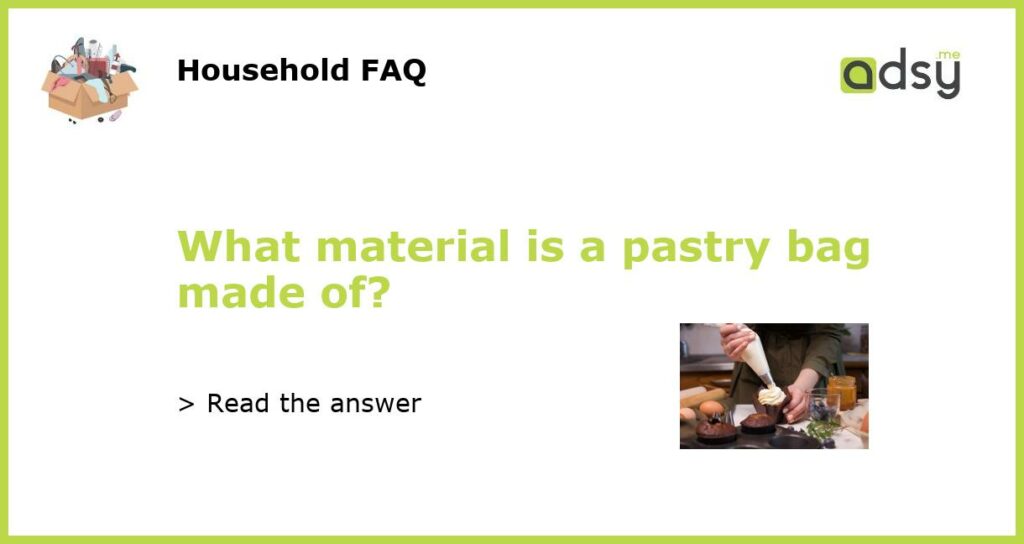Types of Material Used for Pastry Bags
A pastry bag, also known as a piping bag, is a crucial tool in the world of baking and confectionery. It allows bakers and pastry chefs to decorate baked goods like cakes, cookies, and cupcakes with precision and finesse. The material used for a pastry bag plays a significant role in its durability, ease of use, and the quality of the end product. There are several materials commonly used to make pastry bags, each with its own advantages and disadvantages.
Plastic Pastry Bags
Plastic pastry bags have gained popularity in recent years due to their affordability and convenience. They are typically made of food-grade polyethylene or other synthetic materials that are lightweight and easy to handle. Plastic pastry bags are disposable, meaning they can be used once and thrown away, making them a hygienic option for professional and home bakers alike. However, their downside is that they are not sustainable and can have a negative environmental impact when not properly disposed of.
Cloth or Canvas Pastry Bags
Cloth or canvas pastry bags have been used for generations and are still favored by some bakers today. These bags are typically made of tightly-woven cloth or heavy canvas that is durable and can withstand repeated use. Cloth pastry bags are washable and reusable, making them a sustainable option for eco-conscious bakers. They are also more flexible than plastic bags, allowing for greater control when piping delicate decorations. However, cloth bags may require more maintenance and can be prone to staining and odor retention.
Silicone Pastry Bags
Silicone pastry bags are a relatively newer addition to the market. These bags are made of food-grade silicone, which is a flexible and heat-resistant material. Silicone bags are generally considered to be more durable than plastic or cloth bags and can withstand high temperatures without melting or becoming misshapen. They are also easy to clean and often dishwasher-safe. Silicone pastry bags are a popular choice among professional bakers and those who frequently work with hot or thick preparations. However, they can be more expensive than other options and may not be as widely available.
Disposable vs. Reusable Pastry Bags
When choosing a pastry bag, one must consider whether they prefer a disposable or reusable option. Disposable bags, such as those made of plastic, have the advantage of convenience and easy cleanup. They are particularly useful in professional settings where time is of the essence. On the other hand, reusable bags, like cloth or silicone, offer sustainability and durability. These bags may require more care and maintenance but can be a cost-effective choice in the long run.
The material used for a pastry bag can significantly impact a baker’s experience and the quality of the final product. Plastic, cloth, and silicone are among the most common materials used for pastry bags, each having its own set of advantages and disadvantages. Plastic bags are affordable and convenient but not environmentally friendly. Cloth bags are reusable and offer greater control but can require more maintenance. Silicone bags are durable and heat-resistant but may come with a higher price tag. Whether one chooses a disposable or reusable option ultimately depends on their needs and priorities in the kitchen.






